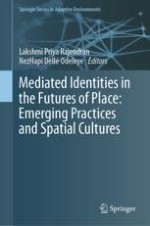2020 | OriginalPaper | Chapter
9. Reconstituted Smart Citizenships Hacking Data-Based Urban Representations of the Public Domain
Author : Miguel Paredes Maldonado
Published in: Mediated Identities in the Futures of Place: Emerging Practices and Spatial Cultures
Publisher: Springer International Publishing
Activate our intelligent search to find suitable subject content or patents.
Select sections of text to find matching patents with Artificial Intelligence. powered by
Select sections of text to find additional relevant content using AI-assisted search. powered by
